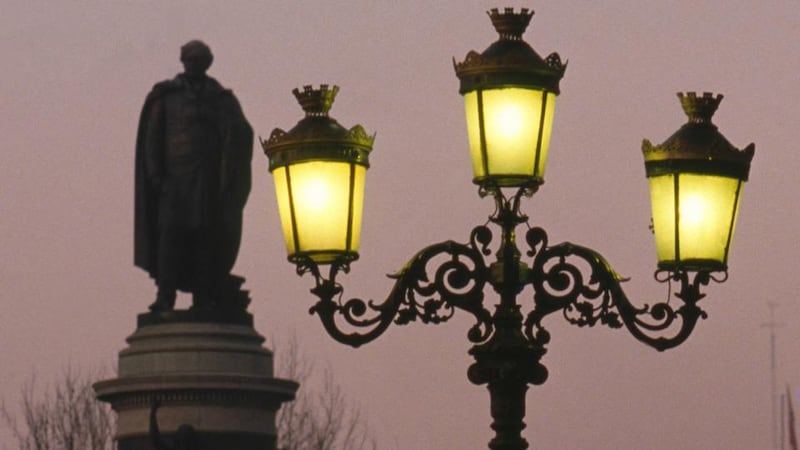Technology has moved on somewhat since the first public lighting appeared in Dublin city more than 400 years ago. The Candlelight Law of 1616 required every fifth house to put a candle in the window to light the path outside, and possibly made the city a little less shady, but it took until 1697 for the first street lamps to appear.
These lights, powered by whale oil, were in use for more than a century before they were supplanted in 1825 by mains-piped gas lights, which remained in use in parts of Dublin until 1957 and are still illuminating the Phoenix Park today.
New-fangled electric lighting began to take over from the end of the 19th century. In 1880 the city’s first electric public light was installed outside the Freeman’s Journal offices on Princes Street, and the trend quickly took off with 17 electric lights installed in 1881 and 114 by 1882.
Various bulb evolutions took place over the course of the 20th century. The atmospheric blue mercury vapour lights came along in the 1930s, followed by the orange low-pressure sodium lights in the 1950s. Yellow high-pressure sodium lights began to replace the mercury bulbs in the 1980s and 1990s, while the orange lights continued in use.
LED lights, which now seem so familiar, have been commercially available for street lighting only since 2010.
A LED replacement programme, under way since 2016, will take a major step forward this year in Dublin city with plans to spend €55.4 million upgrading public lighting, 60 per cent of which will be spent over the next two years.

"All remaining lights will be converted to LED technology. The core principles of the project are to address the potential for energy savings and reduce our carbon footprint," Martin Maycock, senior engineer with Dublin City Council's lighting division, said.
Cost savings
The project, which will see the replacement of up to 40,000 bulbs, will also result in significant cost savings.
“There will be a 50 per cent reduction in energy from the new lights and that is a significant driver of this scheme, but it has also great benefits for the public purse with a 50 per cent reduction in energy costs,” he said.
The council expects to save up to €1.5 million annually just through changing the bulbs, but more savings still are expected from moving to a computerised management system, senior executive engineer Séamus MacSweeney explained.
“At present we have about 15 patrol routes that we drive on a regular basis to identify lights that are out of order, but with the advent of a central management system you don’t need to physically go out and check whether a light is out of order, it will come up on the system. It just makes maintenance more streamlined and efficient.”
Also, Mr Maycock said, it would allow the lights to be adapted to different environmental conditions.
“When your lights are controlled by a computerised system, it means you can know when they’re on and off, if there’s a fault, if they are on during the day when they shouldn’t be, or off at night. You know how much light is emitted and how much energy is consumed. You can control the light where you might have sensitive environmental concerns, and have a specific lighting plan for certain times of the day.”
The programme also involves the restoration or replacement of old “lighting columns” or lamp stands some of which will be replaced with replica “heritage columns” more fitting to their surroundings than later 20th century posts.
“We’re trying to retain the character of the existing heritage infrastructure replacing the luminaries but retaining the existing style where possible,” Mr MacSweeney said
What won’t be making a comeback, he said, were the old orange lights, which gave the city’s sky its distinctive sepia hue for more than 70 years.
“They don’t make the orange box light any more so there is no option even if people wanted to keep that sort of style, that ship has sailed.”









